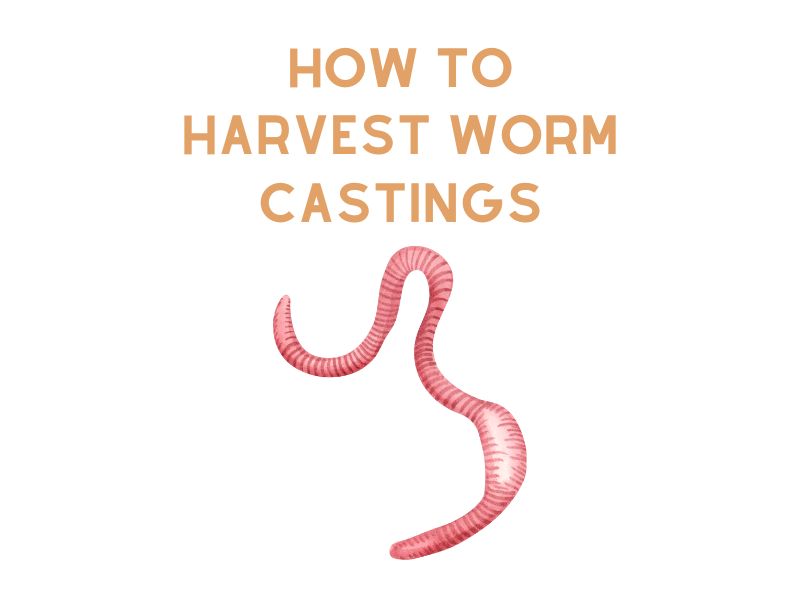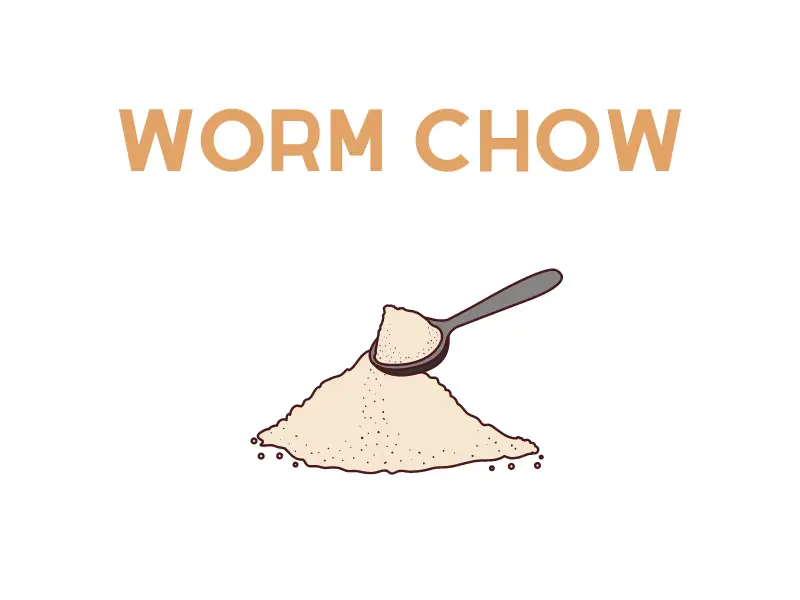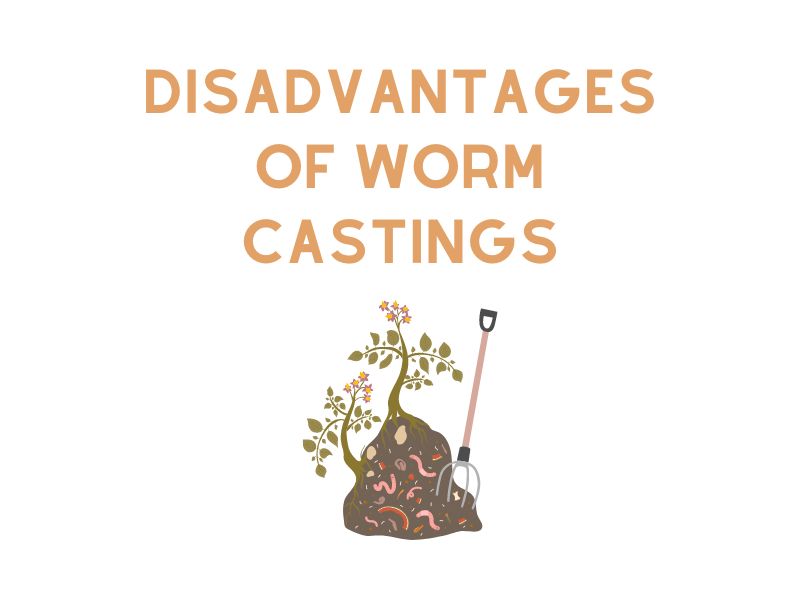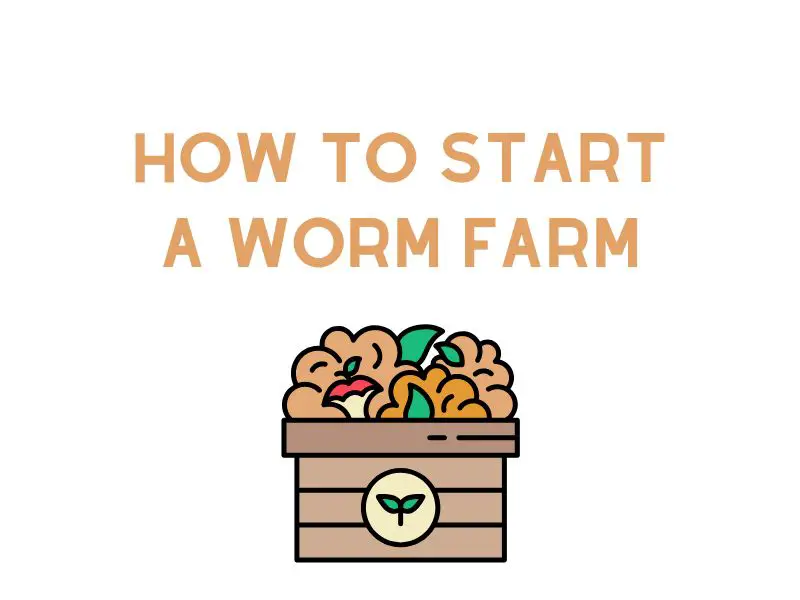Vermicomposting, the art of using worms to transform organic waste into nutrient-rich compost, has garnered significant attention among gardeners and sustainable living enthusiasts. Among the outputs of this process, worm castings from a simple compost setup stand out as a prized yield, often referred to as “black gold” for its incredible fertility. As you venture into this realm, you might often find yourself wondering about the intricacies of how to harvest the worm castings without disrupting your tiny, hardworking allies. Preparing your worm bin for harvest requires a delicate balance; you’d want to get the worms separated from the castings while ensuring their comfort and health. This task might seem daunting, especially when you observe the intertwined layers of worm bedding, castings from the bottom, and the wriggling worms themselves. Yet, with the right knowledge, you can guide the worms to migrate to one side of the worm bin, making the process worm-free and straightforward. While some worms may be more resistant to movement, with patience and understanding of what a bin needs, even beginners can achieve a successful harvest. Join us as we delve into the steps, tips, and tricks of ensuring you not only want to harvest but can do so with efficacy and ease.
When to Harvest
Before talking about the specific methods of harvesting, let’s first discuss proper timing. This is important to ensure that you will have optimal yield. It takes around two to six months before you are ready to take the castings off the compost. Aside from this, there are also some tell-tale signs that the castings are ready for harvest, including those mentioned below:
- It develops a deep and dark brown color. If it turns black, then it means that it is beyond finished, losing all its beneficial properties.
- It has a uniform texture. Try to grab a portion of the casting and feel the texture in your hand to see if it is ready for harvest.
- It is ready for harvest when worm reproduction slows. Worms have limits when it comes to their reproduction rate. When they reach this limit, it is time to harvest.
The Different Ways of Harvesting Worm Castings
Once you have determined that they are ready for harvest, it is now time to get your hands dirty. There is no single best way to do this. There are different methods, and you can choose which one is suitable for your preference.
Migration Method
The name itself should already give you an idea of how it works. The main idea is to let the worms get out of the bin by themselves. They will naturally follow their food source. So, all that you have to do is to avoid adding more food scraps when you are ready for harvest. This will encourage worm relocations, and they will leave castings that will be easier for you to harvest. This way, you will not need to separate the worms from the vermicast.
In a tray, move all the organic food scraps to the other end. If you are adding more scraps, put them on one end. This will encourage the worm to move on that side. Meanwhile, if you have multiple trays, there must be a way for the worms to move horizontally or vertically depending on where the food is. When they move, you can easily harvest the castings without separating them from the worm. This will make your life a lot easier.
Light Method
This method relies on photosensitivity to harvest castings. Because worms are naturally sensitive to light, they will move away from it and transfer somewhere it is darker. Being photophobic, worms will dig into a darker environment. This means that they will hide, leaving the castings free for you to remove.
To do this, gather the compost and put a light source on the top. You can also make a pyramid out of the compost and expose the top part to lighting. The worms will then dig deeper into the pyramid. When they are out, all that you have to do is to scoop the castings.
Dump Method
It is one of the simplest methods for harvesting worm casting. As the name implies, this requires dumping the compost. You will simply have to dump the contents of the compost in the garden, about half of the current size. When they are in a larger environment, worms will not gather in a specific area. This means that they will be soon moving out of the compost, leaving the castings free for you to harvest.
While this is a simple method, some people do not like how it loses half of the worms in the bin. The moment that you dump half of the compost, you are letting go of most of the worms, setting them free in the garden.
Screen Method
You will need a screen to do this harvesting method. The key to the success of this method is the use of the right screen. If the holes are too large, then everything will just fall through the bottom. On the other hand, when the holes are too small, then the castings will not fit through them.
To do this, add a screen on the top of the bin or in any other area where you are comfortable working. Grab a handful of the compost and position it on the top of the screen. Spread the compost. The castings will push through, allowing you to separate them from the rest of the compost. You might need to repeat the procedure if there are still more castings that remain.
Handpicking Method
This is perhaps the simplest of all the harvesting methods on our list. You have to do it manually, which makes it quite tedious. Dig until the bottom of the bin and scoop a handful of the compost. Hand-pick the worms and put them back on the tray. The one on your hand, meanwhile, can now be dumped wherever you would like to use the castings. Make sure to handle the worms with caution. If you apply too much force, you will end up squishing them and they might die.
Frequently Asked Questions (FAQ)
What is a worm bin?
A worm bin is a container specifically designed for vermicomposting, where you can harness the power of worms to decompose organic waste and turn it into nutrient-rich compost. It provides an environment suitable for worms to thrive and break down organic matter.
What is the difference between a worm bin and a compost bin?
A worm bin is specifically designed for vermicomposting using worms, while a compost bin is a general term for any container or system used to compost organic matter using the natural process of decomposition, which may or may not involve worms.
When is the compost ready to harvest?
The compost is ready to harvest when it has been fully decomposed and transformed into dark, crumbly material called worm castings or “black gold.” This process typically takes several months, depending on factors such as the size of the bin, the quantity of organic waste, and the activity of the worms.
What is bedding in a worm bin?
Bedding refers to the material used to create a comfortable and suitable living environment for the worms in the worm bin. Common bedding materials include shredded newspaper, cardboard, coconut coir, and straw. It provides structure, absorbs moisture, and acts as a food source for the worms.
How does vermicomposting work?
Vermicomposting is a process where worms, mainly composting worms, consume organic waste materials and break them down through digestion. The worms excrete nutrient-rich castings, which are full of beneficial microorganisms and essential nutrients for plant growth. This process helps reduce waste and produces high-quality compost.
What does it mean to sift worm castings?
To sift worm castings means separating the finished compost from any remaining undigested materials or worm cocoons. This can be done using a mesh or screen with small holes. Sifting helps ensure that you obtain a fine, homogeneous product that is ready to be used in gardening or other applications.
What is compost tea?
Compost tea is a liquid fertilizer or plant “tea” that is made by steeping compost in water. It is a natural and organic method of providing nutrients to plants, improving soil quality, and promoting beneficial microbial activity in the soil.
Conclusion
Harvesting worm castings, often referred to as “black gold” or simply worm poop, is a sustainable practice that turns food waste into a rich fertilizer for your plants. Starting with a basic worm bin like the Worm Factory 360 or the urban worm bag, many enthusiasts soon find that the resulting castings from a simple worm compost bin have unparalleled benefits for garden soil. Over time, as you feed the worms and maintain the right environment, the material in your worm bin transforms into worm-free castings ready for use.
To harvest your worm castings, it’s essential to know when and how to do so. Typically, when the castings look distinct from the bedding and food, and the bottom tray of the bin has a considerable amount of this worm humus, it indicates that it’s time to start harvesting worm castings. One effective method involves placing fresh food on one side of the bin, allowing the worms to migrate. This makes it easier to scoop out the finished product on the other side of the bin without many worms. Tools like screens can also be utilized to screen worm castings and ensure they are free of worms. As worms don’t burrow deep and prefer to stay close to their food and bedding, this method often leaves most worms behind.
Composting with worms, for those who have not yet started a worm bin, is not just about managing waste. It’s about turning that waste into pure worm castings, a potent addition to any compost pile or potting soil. For those who have just begun their journey and are preparing their worm bins, remember to ensure proper air holes and to keep the worms comfortable. Soon, you’ll have a thriving worm compost bin, with worms actively aerating and converting your waste, and when you finally harvest the vermicompost, you can put them to good use in your gardens and pots.
In essence, from a modest beginning in a new bin to actively aerated compost tea made from worm castings as well, the entire process of composting with worms underscores the cyclical beauty of nature. And as we witness worms turn waste into a valuable resource, we are reminded of nature’s ability to regenerate and renew.




